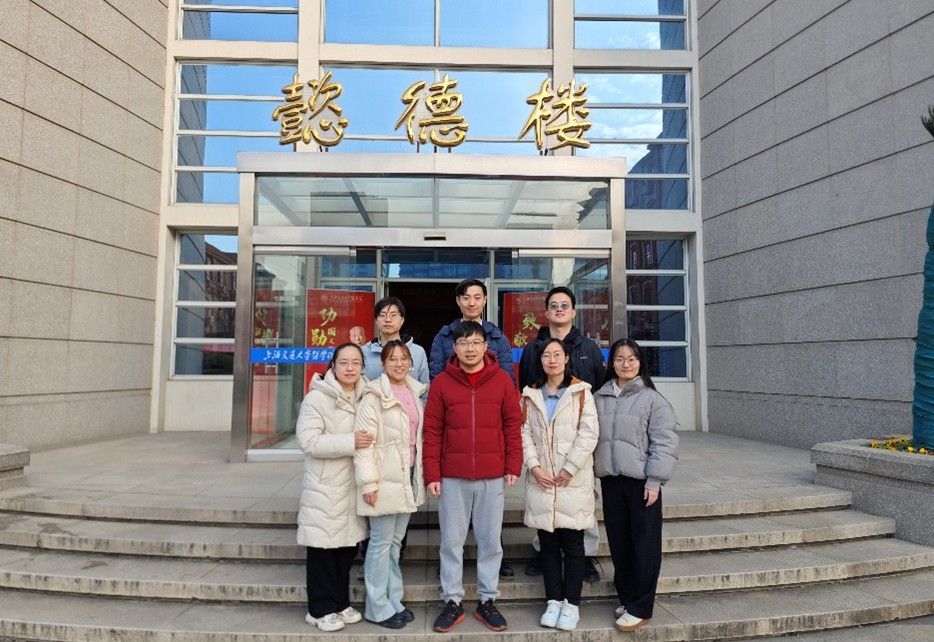Laboratory of Protein Dynamic Structure and Function Prediction and Molecular

1. Lab Leader: Shaoyong Lu
Lab Name: Laboratory of Protein Dynamic Structure and Function Prediction and Molecular Discovery
Lab Info:Our lab is dedicated to the prediction of protein dynamic structures and functions, as well as the molecular discovery process. Specially, we focus on identifying small molecule binding sites for undruggable proteins and discovering associated molecules.
The research interests include:
1. Prediction of protein dynamic structure and function. This involves employing enhanced sampling techniques and AI-based methodologies to comprehensively characterize the conformational ensembles of proteins.
2. Molecular discovery. This focuses on identifying small molecules targeting undruggable proteins by leveraging their dynamic conformational ensembles.
Lab Members:
| Name | Title | |
| Dr. Jianxiang Huang | Research Fellow |
Laboratory of Molecular Pharmacology and Drug Design

1. Lab Leader:Youwen Zhuang
Lab Name: Laboratory ofMolecular Pharmacology and Drug Design
Lab Info:Our laboratory investigates the molecular pharmacology of G protein-coupled receptors (GPCRs) and advances structure-based drug design, with a primary emphasis on neurotransmitter GPCRs. We focus particularly on receptors fundamental tothe onset and progression of neuropsychiatric disorders, including dopamine, opioid, and serotonin receptor systems.
The research interestsencompass:
1.Elucidating the molecular basis of GPCR precision pharmacology and signal transduction mechanisms. GPCRs respond to diverse ligands exhibiting distinct pharmacological profiles, such as antagonist, partial agonist, and allosteric modulator activities. We aim to uncover the precise molecular mechanisms underlying these varied pharmacological responses, thereby informing the design of drugs with desired pharmacological activities;
2.Structure-based screening and development of novel therapeutics for neurological disorders;
3.Identification and discovery of innovative drug targets for the treatment of neuropsychiatric conditions.
Lab Members:
Name |
Title |
|
Kewei Chang |
Assistant ResearchProfessor |
changkewei@sjtu.edu.cn |
Mingyang Li |
Experimentalist/Lab Manager |
mingyangli@sjtu.edu.cn |
Jianhui Zhou |
Postdoctoral Fellow |
jhzhou2024@sjtu.edu.cn |
He Yang |
PhD Candidates |
yang.he@sjtu.edu.cn |
Yini Liu |
Exchange Student |
liuyini106ngu@163.com |
Yunyun Zhang |
Exchange Student |
yyzz2210@163.com |
Miaojie Xu |
Exchange Student |
m202400630931@163.com |
Zhikang Xu |
Visiting Scholar |
zhikangxu@sina.com |

Laboratory of AI-Driven Glycan Regulation and Drug Discovery

1. Lab Leader: Xi Cheng
Lab Name: Laboratory of AI-Driven Glycan Regulation and Drug Discovery
Lab Info: Our lab focuses on integrating artificial intelligence (AI) with molecular simulation methodologies to decode glycan-mediated regulatory mechanisms and pioneer AI-driven drug development platforms.
The research interests include:
1. Algorithm development for molecular interactions. To develop AI and molecular simulation algorithms aimed at modeling multi-scale intermolecular interactions.
2. AI-driven glycan structure-function analysis. To unveil the structure-function relationships of glycans and elucidate their regulatory roles in pathological processes using machine learning methods.
3. Intelligent drug discovery targeting glycan regulation. To establish AI-powered drug screening systems to accelerate therapeutic development for cancer and immune disorders via glycan modulation.
Laboratory of AI Protein Design

Lab Leader: Haicang Zhang
Lab Name: Laboratory of AI Protein Design
Lab Info:Our lab aims to develop advanced AI algorithms for protein design, drug design and protein complex structure prediction. Our long-term goalisto build the unified generative model for both structure prediction and de novo design across multiple biological molecules, including proteins, nucleic acids (DNA/RNA), and small molecules.
The research interests include:
1. Cutting-Edge AI Methodology
Develop next-generation generative models, reinforcement-learning frameworks, and deep geometric learning methods tailored to life science research.
2. AI-Driven Protein Design
Build generative models for de novo design of therapeutic proteins—antibodies/nanobodies, peptides, and mini-proteins.
3. AI-Driven Protein Structure Prediction
Predict conformational ensembles and interaction interfaces by integrating AI models with physics-based models, thereby accelerating molecular docking and virtual screening.
Lab Members:
Name |
Title |
Research Topic |
Yuliang Fan |
Research Fellow |
AI protein design |
Zaikai He |
Research Fellow |
AI protein design |




